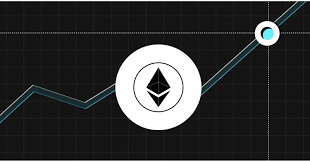
NFTs vs. Tokens: A Simple Guide to Understanding the Difference
NFTs and tokens are two basic terms in the crypto world. While they both exist on blockchains, they serve different purposes and have unique characteristics. This article will help you understand what NFTs and tokens are, how they differ, and why it matters.
What Are Tokens?
Tokens are digital assets created on a blockchain. They can represent various things like currency, access rights, or even voting power in a project. Tokens are typically fungible, meaning each one is the same as another. For example, one Bitcoin is equal in value to another Bitcoin.
Types of Tokens
● Cryptocurrencies: Digital currencies like Bitcoin used for transactions.
● Utility Tokens: Provide access to a product or service within a blockchain ecosystem.
● Security Tokens: Represent ownership in an asset, like shares in a company.
● Governance Tokens: Allow holders to vote on decisions in a decentralized organization.
What Are NFTs?
NFT stands for Non-Fungible Token. Unlike regular tokens, NFTs are unique and cannot be exchanged on a one-to-one basis. They are used to represent ownership of a specific item or piece of content, like digital art, music, or virtual real estate.
Key Features of NFTs
● Uniqueness: Each NFT has distinct information making it different from any other.
● Indivisibility: NFTs cannot be divided into smaller units.
● Ownership Proof: They provide a verifiable record of ownership on the blockchain.
● Smart Contracts: NFTs can have built-in rules, like paying royalties to the original creator on resale.
NFTs vs. Tokens: The Main Differences
| Feature |
Tokens |
NFTs |
| Fungibility |
Fungible (interchangeable) |
Non-Fungible (unique) |
| Use Case |
Currency, access, voting |
Digital art, collectibles |
| Divisibility |
Can be divided |
Usually cannot be divided |
| Value Basis |
Market supply and demand |
Rarity, creator, demand |
Real-World Examples
● Tokens: Ether (ETH) is used to pay for transactions on the Ethereum network. Uniswap's UNI token allows holders to vote on protocol changes.
● NFTs: Digital artist Beeple sold an NFT artwork for $69 million. In games like Axie Infinity, players own NFTs representing unique creatures.
Why It Matters
Understanding the difference between NFTs and tokens is crucial for anyone interested in the digital asset space. Tokens are essential for the functioning of blockchain platforms, enabling transactions and governance. NFTs, on the other hand, are revolutionizing ownership and authenticity in the digital world, impacting art, gaming, and beyond.
Conclusion
Both NFTs and tokens are integral parts of the blockchain ecosystem, each serving distinct purposes. Tokens facilitate transactions and access within blockchain networks, while NFTs provide a way to own and verify unique digital items. As the digital landscape evolves, understanding these differences will help you navigate and participate in this exciting space.
Disclaimer: The opinions expressed in this article are for informational purposes only. This article does not constitute an endorsement of any of the products and services discussed or investment, financial, or trading advice. Qualified professionals should be consulted prior to making financial decisions.



